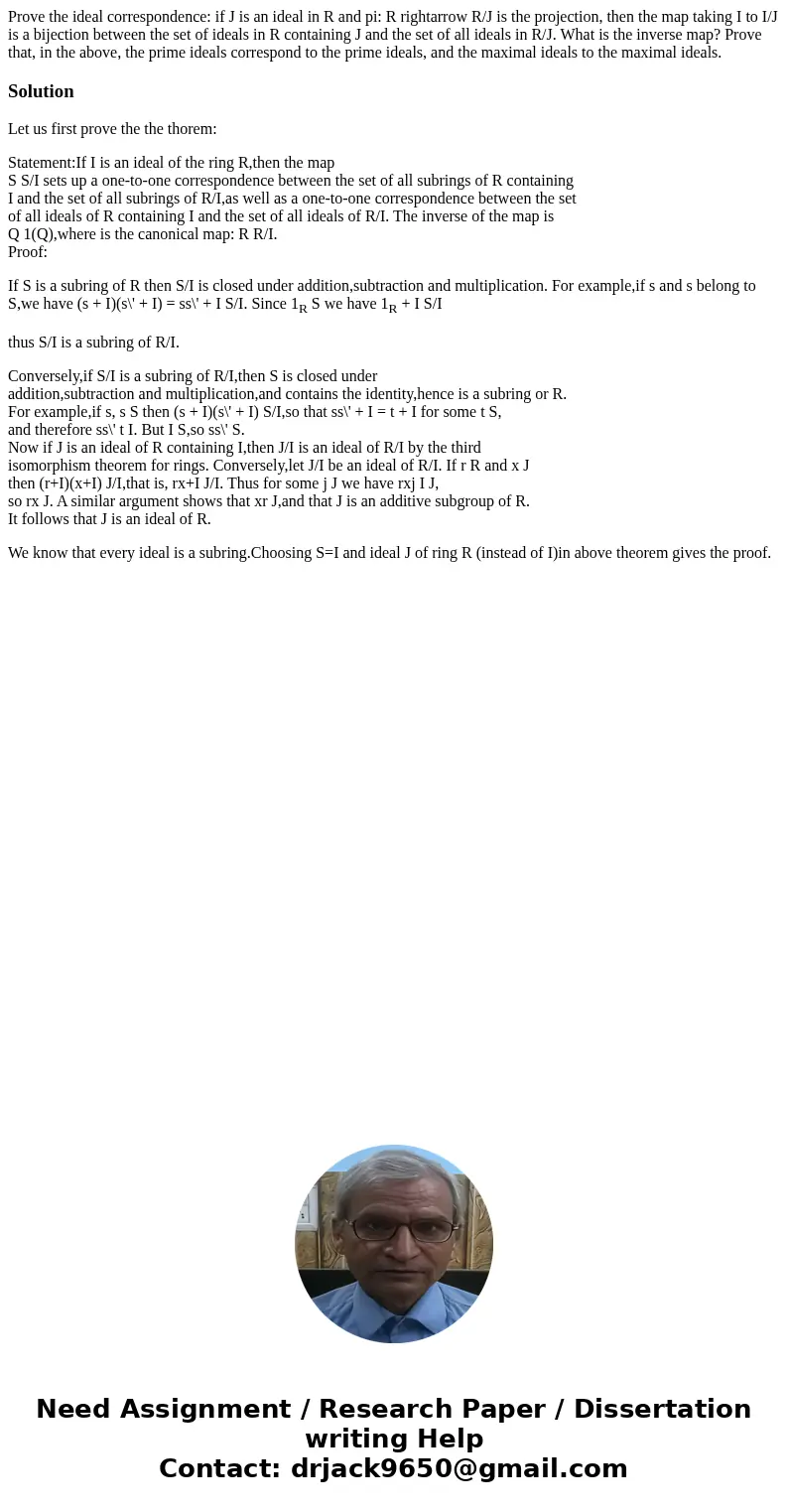Prove the ideal correspondence if J is an ideal in R and pi
Solution
Let us first prove the the thorem:
Statement:If I is an ideal of the ring R,then the map
S S/I sets up a one-to-one correspondence between the set of all subrings of R containing
I and the set of all subrings of R/I,as well as a one-to-one correspondence between the set
of all ideals of R containing I and the set of all ideals of R/I. The inverse of the map is
Q 1(Q),where is the canonical map: R R/I.
Proof:
If S is a subring of R then S/I is closed under addition,subtraction and multiplication. For example,if s and s belong to S,we have (s + I)(s\' + I) = ss\' + I S/I. Since 1R S we have 1R + I S/I
thus S/I is a subring of R/I.
Conversely,if S/I is a subring of R/I,then S is closed under
addition,subtraction and multiplication,and contains the identity,hence is a subring or R.
For example,if s, s S then (s + I)(s\' + I) S/I,so that ss\' + I = t + I for some t S,
and therefore ss\' t I. But I S,so ss\' S.
Now if J is an ideal of R containing I,then J/I is an ideal of R/I by the third
isomorphism theorem for rings. Conversely,let J/I be an ideal of R/I. If r R and x J
then (r+I)(x+I) J/I,that is, rx+I J/I. Thus for some j J we have rxj I J,
so rx J. A similar argument shows that xr J,and that J is an additive subgroup of R.
It follows that J is an ideal of R.
We know that every ideal is a subring.Choosing S=I and ideal J of ring R (instead of I)in above theorem gives the proof.

 Homework Sourse
Homework Sourse